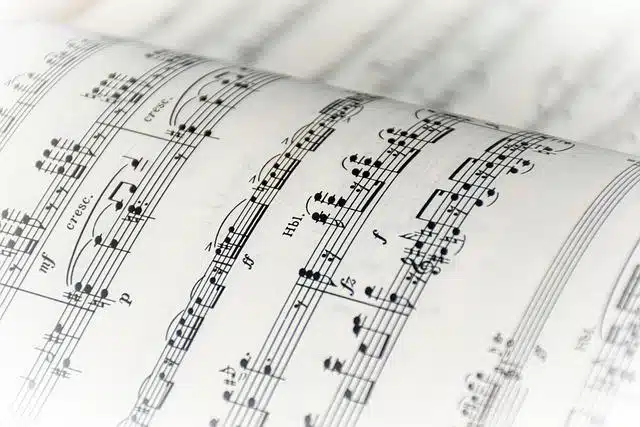
A musical note is a sound that is generated by vibration with a constant frequency.
A musical note is the sound that is produced through a vibration whose frequency is constant. It can be said, therefore, that a note is a sound with a certain frequency.
Currently, the existence of seven notes in a diatonic scale (which lacks changes in tonality) is considered. The musical notes are do , re , mi , fa , sol , la and si , according to Latin notation.
Those same musical notes can be called something else. For Anglo-Saxon notation, for example, the notes are C (do), D (re), E (mi), F (fa), G (sol), A (la) and B (si).
Alterations and execution of a musical note
It should be noted that it is possible to lower or raise semitones of musical notes by appealing to alterations such as sharp , flat , double sharp , double flat and square . The sharp, to mention one case, goes up a semitone, while the flat does the opposite (lowers a semitone). There are, in short, natural notes and altered notes .
Musical notes can be played with any type of musical instrument , from a guitar to a trumpet, including a piano and a violin. Even the voice can interpret notes.
It is important to mention, on the other hand, that musical notes can be represented in writing. For this it is necessary to resort to the musical figures that are located in specific places on the staff .

All instruments can play musical notes.
The scales
Starting from a musical note, it is possible to develop a scale . If different musical notes sound simultaneously, chords are generated. On the other hand, the logical combination of notes allows the construction of melodies .
In the context of a key, musical notes have different tensions with each other, and this allows us to know what position each one occupies within the scale even without knowing its name. For example, in a major scale, the tension that each note (also called degree ) has with the main one (i.e., the tonic ) is very different, and for a trained musician it is impossible to confuse them.
These tensions help us identify the relationship that a given note has with the main note of the key in which the melody is found, or if it is the main note. Those with the most tension invite us to close the melody; This occurs, for example, with the sensitive and the fifth degree, with which the final cadence is usually elaborated.
Adaptation of a musical note
Of course, this shows us that musical notes are not rigid elements but adapt to their environment, they fulfill different functions depending on the key in which they are found, the tuning of the time and the region, the musical style, the placement. vocal or the type of instrument with which they are performed.
While a G natural is the dominant of C in the key of C major (also in C minor), it is the tonic of G major and minor, the third degree of E minor, and the second of F major and minor. This may seem trivial, but for a musician with theoretical knowledge and a well-trained ear , the G musical note sounds very different depending on the key it is in, precisely because of the tension it generates with the others. One of the phenomena that allows us to play with this is the modulation from one key to another while holding a note, which inevitably changes function when said change occurs in the accompaniment.
Regarding sound qualities, a musical note can also sound different if it is performed by an opera singer, a rock singer, a violin, a guitar or a piano. Issues such as vibrato, tuning and timbre considerably affect the result.
